Building your own pottery workbench: A DIY guide
Creating your own pottery workbench can be one of the most rewarding DIY projects you'll ever undertake. Imagine having a dedicated space that not only reflects your personal style but also enhances your pottery-making experience. This guide provides you with step-by-step instructions for crafting a functional and personalized workspace tailored to your unique pottery needs. Whether you're a seasoned potter or just starting, having the right setup can make all the difference in your creative process.
When it comes to setting up your pottery workbench, the location is everything. Think about it: would you want to work in a cramped, dark corner? Of course not! Selecting an ideal location for your workbench is crucial. Here are a few factors to consider:
- Space: Make sure you have enough room not just for the bench itself, but also for your tools and materials.
- Lighting: Natural light is your best friend! Ideally, position your workbench near a window to take advantage of daylight.
- Accessibility: Ensure that your workspace is easily accessible, allowing you to move around freely while working on your projects.
By taking these factors into account, you’ll create a comfortable and efficient workspace that inspires creativity.
Gathering the right materials and tools is vital for building your workbench. Think of it as setting the stage for a great performance; you want everything to be just right! This section outlines the necessary items you'll need, including various types of wood, fasteners, and essential pottery tools, to create a sturdy bench that can withstand the rigors of your craft.
The wood type you choose can significantly impact the longevity of your workbench. Let’s dive into some popular options:
- Plywood: Known for its strength and affordability, plywood is a fantastic option for your workbench.
- Hardwood: If you’re looking for durability and aesthetics, hardwood is a great choice, though it often comes with a higher price tag.
- Softwood: While generally cheaper, softwood may not hold up as well under heavy use.
Choosing the right wood type is like picking the right canvas for a painting; it sets the foundation for everything that follows.
Plywood is a popular choice for workbenches due to its strength and affordability. It resists warping, making it an excellent choice for a workspace that will see a lot of action. Plus, it’s easy to handle during construction, which is a bonus for DIY enthusiasts!
Understanding the differences between hardwood and softwood can help you make an informed decision. Here’s a quick comparison:
| Type | Durability | Cost |
|---|---|---|
| Hardwood | High | Higher |
| Softwood | Moderate | Lower |
Ultimately, the choice between hardwood and softwood depends on your budget and how much wear and tear you expect your workbench to endure.
Equipping yourself with the right tools is essential for building your workbench. Imagine trying to bake a cake without the proper utensils—frustrating, right? Here’s a list of must-have tools:
- Saws (for cutting wood)
- Drills (for making holes and fastening)
- Measuring devices (to ensure precision)
Having the right tools at your disposal will not only make the construction process smoother but will also ensure that your workbench stands the test of time.
A well-thought-out design enhances functionality. Think of your workbench as a stage for your artistic endeavors; every element should contribute to a seamless performance. This section covers various design elements, including height, surface area, and storage options to create an efficient pottery workspace tailored to your needs.
The height of your workbench significantly affects comfort and usability. If it’s too high, you’ll strain your back; too low, and you’ll be hunched over like a question mark! Discover the ideal height recommendations based on your body type and working style to promote better posture while working. A good rule of thumb is to have the work surface at about waist height.
Effective storage solutions are essential for keeping your workspace organized. Imagine trying to create a masterpiece in a cluttered environment—it’s nearly impossible! Explore ideas for shelves, drawers, and tool racks to maximize efficiency and accessibility in your pottery workbench design. By incorporating smart storage, you’ll keep your tools and materials within arm’s reach, allowing your creativity to flow freely.
Finally, adding finishing touches to your workbench can enhance its aesthetics and functionality. Think of it as the icing on the cake! This section discusses surface treatments, paint options, and protective coatings to ensure your workbench remains durable and visually appealing. A well-finished workbench not only looks great but also stands up to the rigors of daily use.
Here are some common questions people have when building their own pottery workbench:
- What type of wood is best for a pottery workbench? Plywood is often recommended for its strength and affordability, but hardwood offers superior durability.
- How tall should my workbench be? Ideally, the work surface should be at waist height for optimal comfort.
- Do I need special tools to build my workbench? Basic carpentry tools like saws, drills, and measuring devices will suffice for most DIY projects.
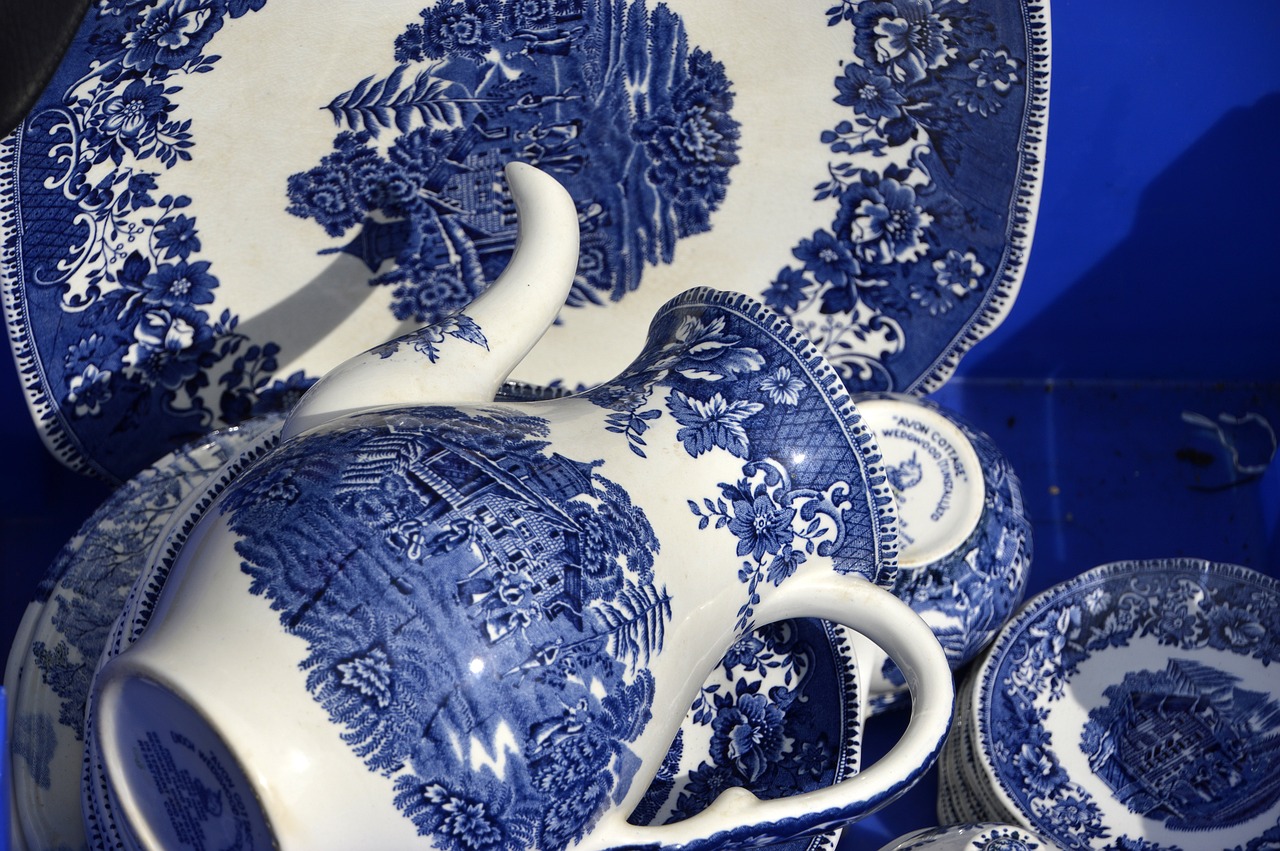
Choosing the Right Location
When it comes to setting up your pottery workbench, the location you choose is absolutely crucial. Imagine this: you’ve got your clay, tools, and ideas ready to go, but if your workspace is cramped, dark, or just plain inconvenient, it can throw a wrench in your creative flow. So, let’s dive into the key factors you should consider when selecting the perfect spot for your pottery haven.
Space is the first thing to think about. You need enough room to move around comfortably, especially when you're working on larger projects. Ideally, you should have at least a few feet of clearance on all sides of your workbench. This not only allows for easy access to your tools and materials but also gives you the freedom to step back and evaluate your creations without feeling claustrophobic.
Next up is lighting. Good lighting can make or break your pottery experience. Natural light is a potter’s best friend, so if you can position your workbench near a window, you’ll benefit from the best kind of illumination. However, if that’s not an option, consider investing in bright, adjustable task lighting. This will help you see the details of your work clearly, especially during intricate tasks like glazing or carving.
Additionally, think about accessibility. Your workbench should be situated in a place that’s easy to get to, especially if you plan to use heavy equipment or materials. If you have to navigate through a maze of furniture or squeeze through tight spaces, you might find yourself frustrated and less productive. A location that’s close to your storage for clay and tools will also save you time and energy.
Lastly, consider the environment around your workbench. A well-ventilated area is essential, especially when you’re working with glazes or other materials that may emit fumes. If you’re setting up in a garage or basement, ensure that you have proper ventilation to keep the air fresh and breathable. Also, think about noise levels; a quiet space can help you concentrate better on your craft.
In summary, your pottery workbench location should be spacious, well-lit, accessible, and in a comfortable environment. By paying attention to these factors, you’ll create a workspace that not only fosters creativity but also enhances your overall pottery experience.
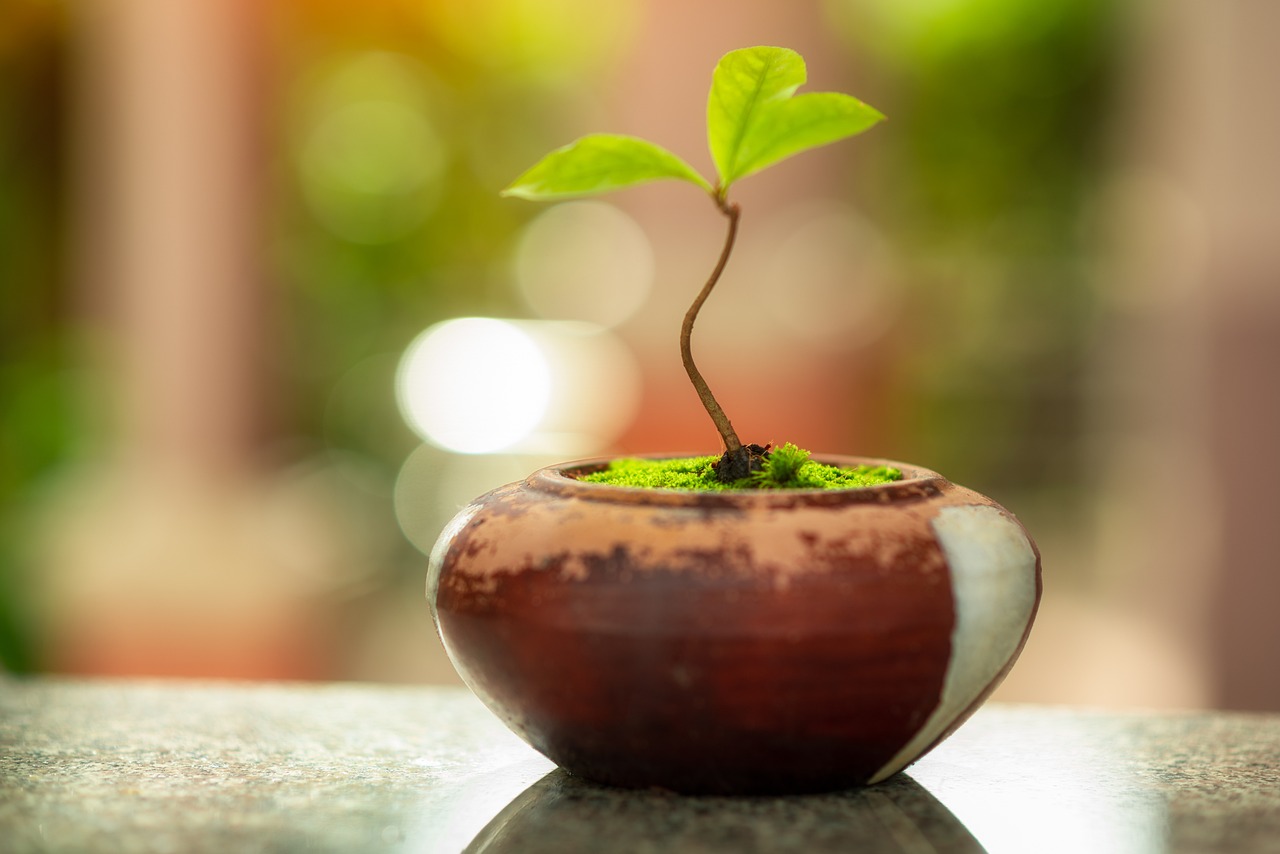
Essential Materials and Tools
When it comes to building your own pottery workbench, having the right materials and tools is absolutely crucial. Think of it like cooking; you wouldn't attempt a gourmet meal without the proper ingredients, would you? In the same way, you need to gather everything you'll need to create a sturdy and functional workspace for all your pottery projects. So, let’s dive into what you’ll need!
First off, let’s talk about the materials. You’ll primarily be working with wood, and the type you choose will significantly affect the durability and functionality of your workbench. For instance, plywood is often favored for its strength and affordability. It’s resistant to warping, which means your workbench will stand the test of time. On the other hand, if you’re looking for something that screams elegance and durability, you might want to consider hardwood. While it can be pricier, its longevity makes it a worthwhile investment. Softwood, though less durable, can be a budget-friendly option for those just starting out.
Next up, let’s not forget about the tools. You’ll need a solid arsenal to make your construction process smooth and efficient. Here’s a quick rundown of some essential tools:
- Saw: A circular saw or a hand saw will help you cut your wood to the desired dimensions.
- Drill: A power drill is essential for making holes and driving screws into your workbench.
- Measuring Tape: Precision is key, so a measuring tape is a must-have to ensure everything fits perfectly.
- Level: You want your workbench to be perfectly even; a level will help you achieve that.
- Screwdriver: Both flathead and Phillips screwdrivers will be needed to secure your workbench together.
Now, you might be wondering, “Do I really need all these tools?” The answer is yes! Each tool plays a vital role in ensuring that your workbench is not only functional but also safe to use. Imagine trying to work on a wobbly table—frustrating, right? With the right tools, you can avoid such headaches.
To give you a clearer picture, here’s a simple table summarizing the materials and their benefits:
| Material/Tool | Benefits |
|---|---|
| Plywood | Strong, affordable, resistant to warping |
| Hardwood | Durable, aesthetically pleasing, long-lasting |
| Softwood | Budget-friendly, easy to work with |
| Saw | Essential for cutting wood accurately |
| Drill | Needed for creating holes and driving screws |
| Measuring Tape | Ensures precision in measurements |
| Level | Confirms that your workbench is even |
| Screwdriver | Secures all components together |
In conclusion, gathering the right materials and tools is a vital first step in your pottery workbench journey. Just like a painter needs a canvas and brushes, you need your wood and tools to bring your creative visions to life. So, take your time to choose wisely, and you’ll be well on your way to crafting a personalized workspace that suits all your pottery needs!
Q: What type of wood is best for a beginner's pottery workbench?
A: For beginners, plywood is often the best choice due to its affordability and durability. It provides a solid foundation without breaking the bank.
Q: Can I use recycled materials for my workbench?
A: Absolutely! Using recycled materials can be a great way to save money and be eco-friendly. Just ensure they are sturdy enough to handle the weight and pressure of pottery work.
Q: How much space do I need for my workbench?
A: Ideally, you should have at least 4 feet by 2 feet of space for your workbench. However, more space is always better, especially if you plan to work on larger projects.
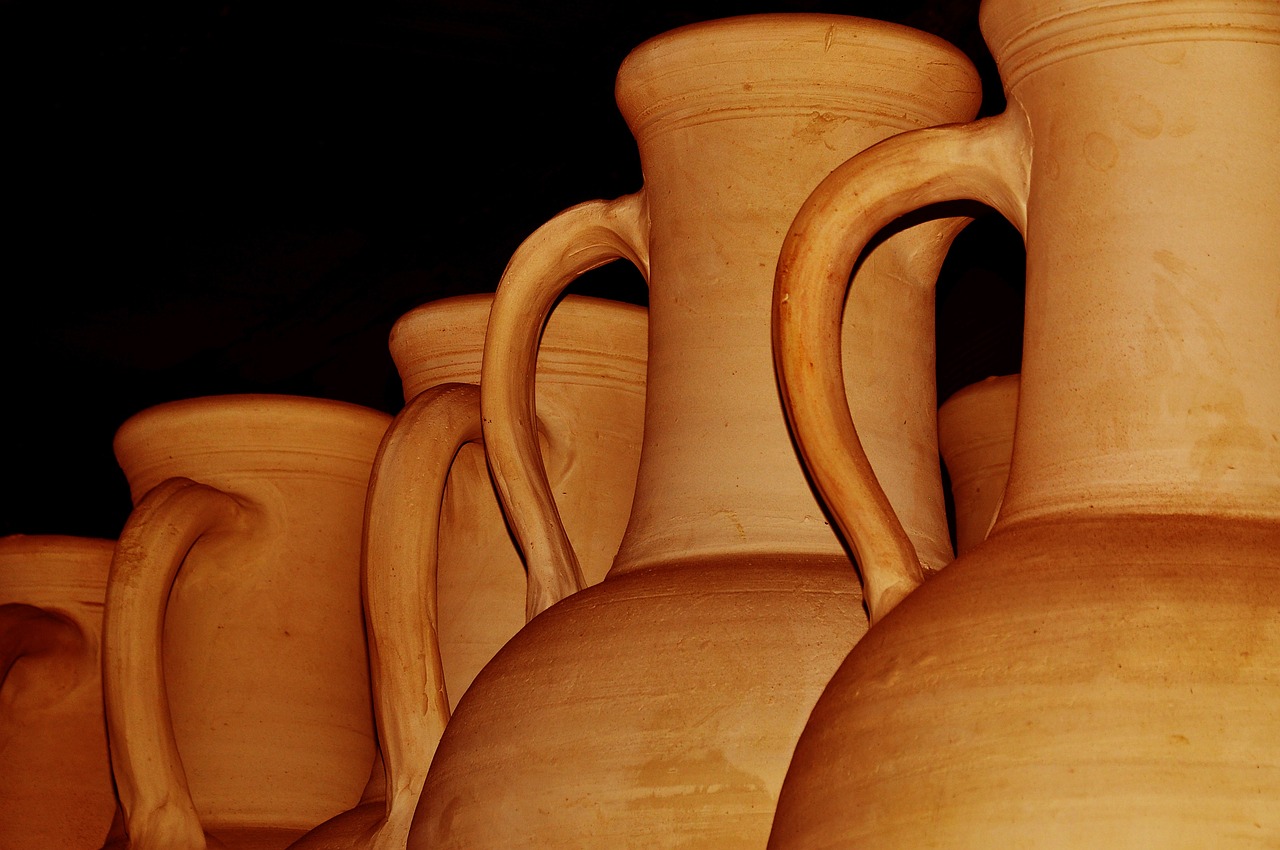
Wood Types for Durability
When it comes to building your pottery workbench, the choice of wood is pivotal. Not only does it affect the aesthetic appeal of your workspace, but it also plays a significant role in the durability and functionality of the bench. In this section, we’ll dive into the various types of wood you can use, helping you make an informed decision that aligns with your pottery needs.
First up, we have plywood. This versatile option is a favorite among DIY enthusiasts for several reasons. Plywood is made from thin layers of wood veneer glued together, which gives it remarkable strength and stability. One of its standout features is its resistance to warping, making it a reliable choice for a workbench that will endure the wear and tear of pottery work. Plus, it’s relatively affordable, which is a bonus if you’re on a budget. You can find plywood in various thicknesses, allowing you to choose the perfect size for your project.
Next, let’s talk about hardwood and softwood. Each type has its own unique characteristics that can influence your decision:
| Wood Type | Durability | Cost | Common Uses |
|---|---|---|---|
| Hardwood | Very Durable | Higher Cost | Furniture, Cabinets |
| Softwood | Less Durable | Lower Cost | Framing, Shelving |
Hardwoods, such as oak, maple, and cherry, are renowned for their durability. They can withstand heavy use and resist scratches, making them ideal for a pottery workbench that sees a lot of action. However, they come with a higher price tag, which might not suit every budget. On the other hand, softwoods like pine and cedar are more affordable and easier to work with, but they may not hold up as well over time. If you’re just starting out or working on a smaller scale, softwood could be a practical choice, while seasoned potters might prefer the longevity of hardwood.
Ultimately, the type of wood you choose should depend on your specific needs and budget. Consider how often you’ll be using your workbench and the intensity of your projects. With the right wood, your pottery workbench can become a cherished part of your creative process, standing the test of time and inspiring you to create beautiful pieces.
- What is the best wood for a pottery workbench?
The best wood depends on your budget and usage. Hardwoods like oak are durable but pricier, while softwoods like pine are more affordable but less durable.
- How thick should the wood be for a workbench?
A thickness of 3/4 inch to 1 inch is generally recommended for a sturdy workbench surface.
- Can I use reclaimed wood for my workbench?
Absolutely! Reclaimed wood can add character and sustainability to your workbench, but ensure it’s free from damage or pests.
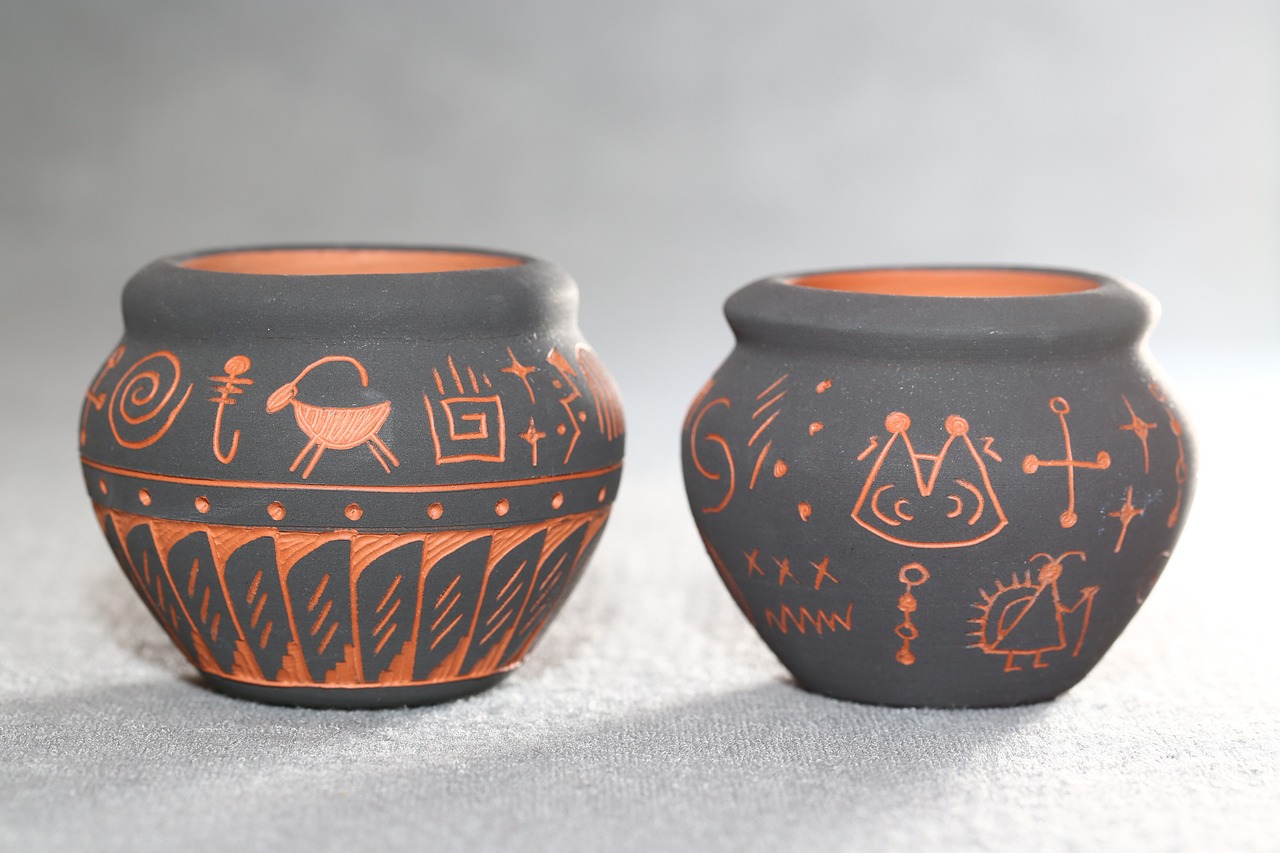
Benefits of Plywood
Plywood is often hailed as a top choice for building a pottery workbench, and for good reason! Its unique construction and properties make it an excellent option for both amateur and professional potters alike. First off, one of the standout benefits of plywood is its **strength**. Unlike solid wood, plywood is made from layers of veneer, which are glued together in a cross-grain pattern. This design not only enhances its durability but also provides superior resistance to warping, which is crucial for maintaining a stable workspace over time.
Another compelling advantage is its **affordability**. Plywood is generally less expensive than hardwoods, making it an economical choice for those looking to create a sturdy workbench without breaking the bank. You can achieve a high-quality finish without the hefty price tag that comes with solid wood options. Plus, it's widely available at most home improvement stores, making it easily accessible for your DIY project.
Moreover, plywood is incredibly **versatile**. It comes in various thicknesses and grades, allowing you to choose the perfect type that suits your specific needs. Whether you need a lightweight option for easy maneuverability or a thicker grade for added strength, plywood has you covered. For potters who might need to move their workspace around, this versatility can be a game changer.
Additionally, plywood is relatively **easy to work with**. It can be cut, drilled, and shaped with standard woodworking tools, which means you won't need to invest in specialized equipment. This ease of use is particularly beneficial for DIY enthusiasts who may be new to woodworking. Just imagine the satisfaction of crafting your own workbench from scratch!
Lastly, plywood can be finished in various ways to enhance its aesthetic appeal and protect it from the wear and tear of pottery projects. You can paint, stain, or apply a protective coating to ensure that your workbench not only looks great but also stands up to the rigors of your creative endeavors. In summary, the benefits of plywood make it an outstanding choice for anyone looking to build a reliable and attractive pottery workbench.
- What is the best thickness for plywood when building a pottery workbench?
The ideal thickness for plywood typically ranges from ¾ inch to 1 inch, depending on the weight of the materials you plan to use on the bench.
- Can I use plywood for outdoor pottery workbenches?
While plywood can be used outdoors, it’s essential to apply a waterproof sealant to protect it from moisture and the elements.
- How do I maintain my plywood workbench?
Regularly clean the surface and occasionally apply a protective finish to keep it in top condition.
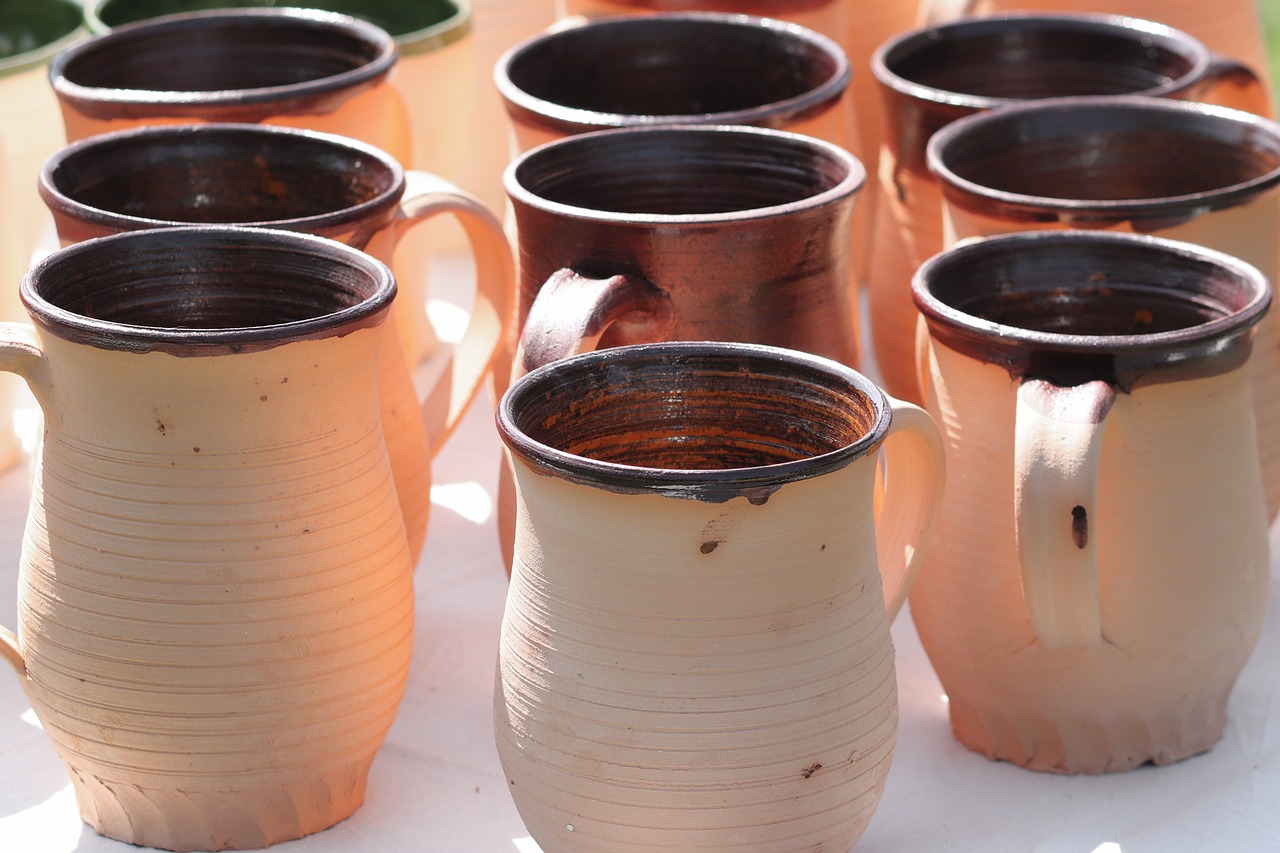
Hardwood vs. Softwood
When it comes to choosing the right wood for your pottery workbench, understanding the differences between hardwood and softwood is essential. Both types of wood have their unique characteristics, advantages, and disadvantages, which can significantly affect the durability and functionality of your workbench. Let's dive into what sets them apart!
Hardwoods come from deciduous trees, which shed their leaves annually. They tend to be denser and more durable than softwoods, making them a popular choice for furniture and work surfaces that require strength and longevity. Common hardwoods include oak, maple, and cherry. These woods are typically more expensive due to their slower growth rates and the fact that they are often sourced from older trees. However, investing in hardwood can pay off in the long run, as it resists scratches and dents better than its softer counterpart.
On the other hand, softwoods are derived from coniferous trees, which usually remain evergreen. They grow faster and are generally less dense, making them lighter and easier to work with. Common examples of softwoods include pine, cedar, and fir. While softwoods are often more affordable, they can be more susceptible to damage from heavy use, moisture, and pests. This can lead to a shorter lifespan for your workbench if you frequently engage in rigorous pottery activities.
To help you make an informed decision, here’s a quick comparison of the two types:
| Feature | Hardwood | Softwood |
|---|---|---|
| Durability | High | Moderate |
| Cost | Higher | Lower |
| Weight | Heavier | Lighter |
| Common Uses | Furniture, cabinetry | Framing, outdoor structures |
Ultimately, the choice between hardwood and softwood will depend on your specific needs and budget. If you’re looking for a workbench that can withstand the wear and tear of daily pottery tasks, hardwood might be the way to go. However, if you’re just starting out or working with a limited budget, softwood can still serve as a functional workspace, especially with proper care and maintenance.
In conclusion, understanding the differences between hardwood and softwood can empower you to make the best choice for your pottery workbench. Whether you opt for the strength of hardwood or the affordability of softwood, ensure that your workspace meets your creative needs while standing the test of time.
- Can I use softwood for my pottery workbench? Yes, softwood can be used, but it may require more maintenance and care.
- What is the best wood for a beginner's workbench? Softwood is often recommended for beginners due to its lower cost and ease of handling.
- How can I protect my wooden workbench? Applying a protective finish or sealant can help protect your workbench from moisture and damage.

Essential Tools for Construction
When it comes to building your own pottery workbench, having the right tools is absolutely essential. Think of your tools as the magic wands of your DIY project; without them, turning your vision into reality can feel like trying to bake a cake without an oven. So, let's dive into the must-have tools that will make your construction process not just easier, but also more enjoyable.
First off, you’ll need a reliable circular saw or a table saw. These tools are your best friends when it comes to cutting wood with precision. Imagine trying to slice through a loaf of bread with a butter knife—frustrating, right? A good saw will provide clean edges and save you a ton of time. If you’re working with thicker wood, a jigsaw can be a lifesaver for those intricate cuts.
Next up on your toolbox checklist is a drill. Whether you're securing pieces together with screws or creating holes for dowels, a good drill will make your life infinitely easier. Think of it as the heartbeat of your construction process, providing power and versatility. Don't forget to stock up on various drill bits, as they will allow you to tackle different tasks with ease.
Measuring accurately is key to any successful project, so a tape measure is a must-have tool. You wouldn’t want to build a workbench that’s too high or too low, right? A tape measure helps ensure that every piece is cut to the correct size. Pair it with a square to check for right angles, and you’ll be on your way to a perfectly constructed bench!
Additionally, having a level handy is crucial. You want your workbench to be stable and even, so a level will help you confirm that everything is aligned. Think of it as your trusty sidekick that keeps everything in check. Lastly, a good set of screwdrivers and a hammer will round out your basic toolkit, allowing you to assemble and fine-tune your workbench with ease.
To summarize, here’s a quick rundown of the essential tools you'll need:
- Circular saw or table saw
- Jigsaw
- Drill with various bits
- Tape measure
- Square
- Level
- Screwdrivers
- Hammer
With these tools at your disposal, you’ll be well-equipped to tackle the construction of your pottery workbench. So, roll up those sleeves and get ready to create a workspace that not only meets your needs but also ignites your passion for pottery!
Q: Do I need professional experience to build a pottery workbench?
A: Not at all! This DIY project is designed for enthusiasts of all levels. With the right tools and a bit of patience, anyone can create a functional workbench.
Q: How much will it cost to build my own workbench?
A: The cost can vary depending on the materials you choose, but building your own workbench can often be more economical than buying a pre-made one.
Q: Can I customize my workbench design?
A: Absolutely! One of the best parts of building your own workbench is the ability to tailor it to your specific needs and style.
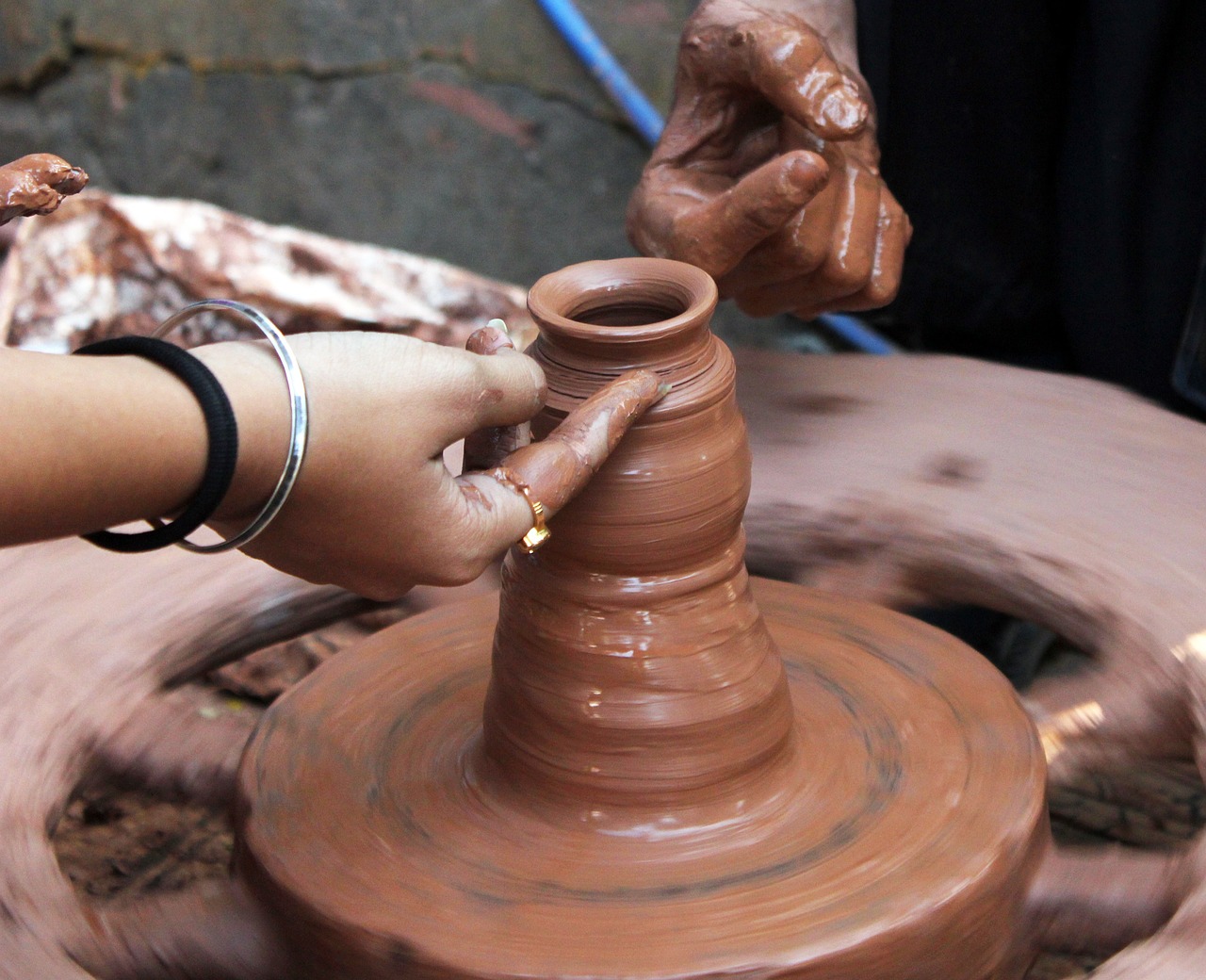
Designing Your Workbench
When it comes to designing your pottery workbench, the key is to create a space that not only meets your functional needs but also feels comfortable and inspiring. Think of your workbench as the heart of your pottery studio—a place where creativity flows and ideas take shape. To achieve this, you'll want to consider several important factors, including height, surface area, and storage options. Each of these elements plays a crucial role in how effectively you can work on your pottery projects.
First off, let’s talk about height considerations. The height of your workbench can significantly impact your comfort and efficiency while working. If your bench is too high, you may find yourself straining your back, while a bench that's too low can lead to awkward postures and fatigue. A general rule of thumb is to set the workbench height at about elbow height when you’re standing. This position allows for a natural arm angle, promoting better posture and reducing the risk of strain over long periods. If you often sit while working, consider a bench that is adjustable or a separate sitting area that aligns with your chair height.
Next, let’s explore the importance of surface area. A larger surface area provides ample space for your pottery projects, tools, and materials, allowing you to work efficiently without constantly shifting items around. Aim for a workbench that is at least 4 feet long and 2 feet wide to give yourself plenty of room. You might even want to consider an L-shaped design if your space allows it, which can give you multiple working surfaces and can help define different areas for various tasks, like prepping clay and glazing.
Storage is another vital aspect of your workbench design. An organized workspace can make all the difference in your productivity. Consider incorporating storage solutions such as shelves, drawers, and tool racks into your design. For instance, shelves above your workbench can hold frequently used items within easy reach, while drawers can keep smaller tools and materials tucked away and protected from dust. You might even want to include a pegboard on the wall for hanging tools, which not only saves space but also keeps everything visible and accessible. Here’s a quick breakdown of some effective storage options:
- Shelves: Great for storing larger items like bags of clay and glazes.
- Drawers: Perfect for keeping smaller tools and accessories organized.
- Tool racks: Ideal for hanging tools, making them easy to grab when you need them.
Lastly, don’t forget about the finishing touches that can enhance both the aesthetics and functionality of your workbench. A smooth, durable surface treatment can protect your bench from stains and scratches while making it easier to clean. You might want to consider applying a sealant or a layer of polyurethane to safeguard the wood. If you're feeling adventurous, a splash of color can also bring some personality to your workspace. Choose a paint or stain that resonates with you, creating an environment that inspires creativity every time you step into your studio.
In summary, designing your pottery workbench is an exciting opportunity to create a space that reflects your personal style while meeting your practical needs. By carefully considering height, surface area, and storage solutions, you can craft a workbench that not only enhances your pottery experience but also becomes a cherished part of your creative process.
Q: What is the ideal height for a pottery workbench?
A: The ideal height is typically at elbow level when standing, which helps maintain good posture and comfort.
Q: How much surface area do I need for my pottery workbench?
A: Aim for at least 4 feet long and 2 feet wide to provide enough space for your projects and tools.
Q: What are some good storage solutions for a pottery workbench?
A: Consider using shelves, drawers, and tool racks to keep your workspace organized and efficient.
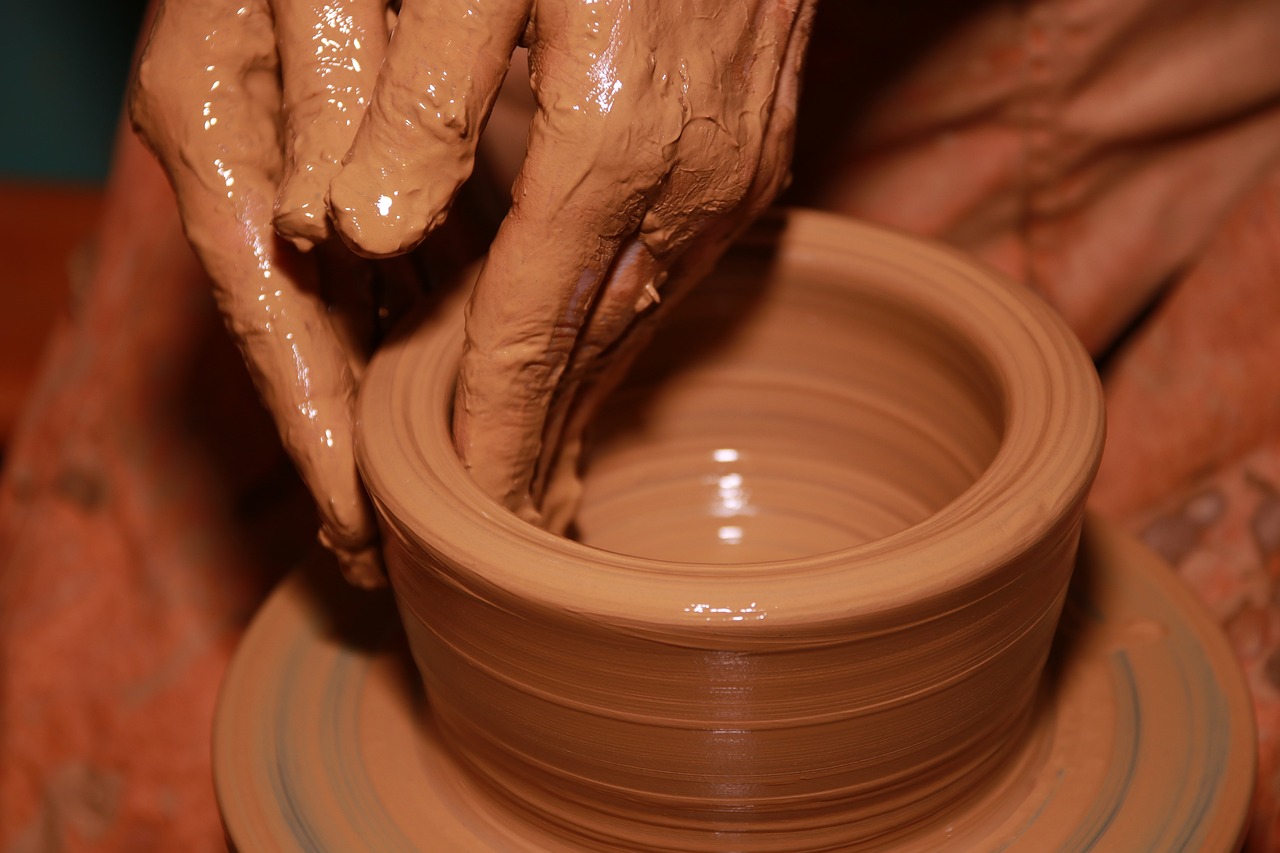
Height Considerations
When it comes to building your pottery workbench, height matters more than you might think! Imagine trying to throw clay while hunched over or reaching awkwardly; it’s not only uncomfortable but can also lead to poor technique and even injury over time. So, how do you determine the perfect height for your workbench? Well, it largely depends on your own body type and working style.
Generally speaking, the ideal height for a pottery workbench is around waist level. This allows for a comfortable stance while working, minimizing strain on your back and arms. If you’re taller, you might want to consider a slightly higher bench, while shorter individuals may prefer a lower setup. To help you visualize this, here’s a simple table outlining the recommended heights based on your height:
| Height of Potter | Recommended Workbench Height |
|---|---|
| Under 5'2" | 28-30 inches |
| 5'3" - 5'6" | 30-32 inches |
| 5'7" - 6'0" | 32-34 inches |
| Over 6'0" | 34-36 inches |
Another important factor to consider is your working style. Are you someone who prefers to sit while working, or do you enjoy the freedom of standing? If you like to sit, you might want to create a bench that can accommodate a stool or chair comfortably. On the other hand, if you’re all about standing, ensure that your workbench height allows for easy access without excessive bending or stretching.
Additionally, think about the tasks you'll be performing at your workbench. For instance, if you're primarily focusing on hand-building, a lower bench might be more comfortable. However, if you're throwing on a wheel, you’ll want to ensure that the height allows for smooth, natural movements. It’s all about finding that sweet spot where comfort meets functionality.
Lastly, don’t forget to test out your design before finalizing it! You can create a temporary setup using boxes or other materials to simulate the height of your workbench. Spend some time working at that height to see how it feels. This little experiment can save you a lot of hassle down the line and ensure that your workbench is a joy to use rather than a pain!
- What is the best height for a pottery workbench? The best height varies based on individual preferences, but generally, it should be around waist level.
- Can I adjust the height of my workbench later? Yes, you can build an adjustable workbench or add risers to modify the height as needed.
- How do I know if my workbench is too high or too low? If you find yourself straining your back or arms while working, it may be time to adjust the height.
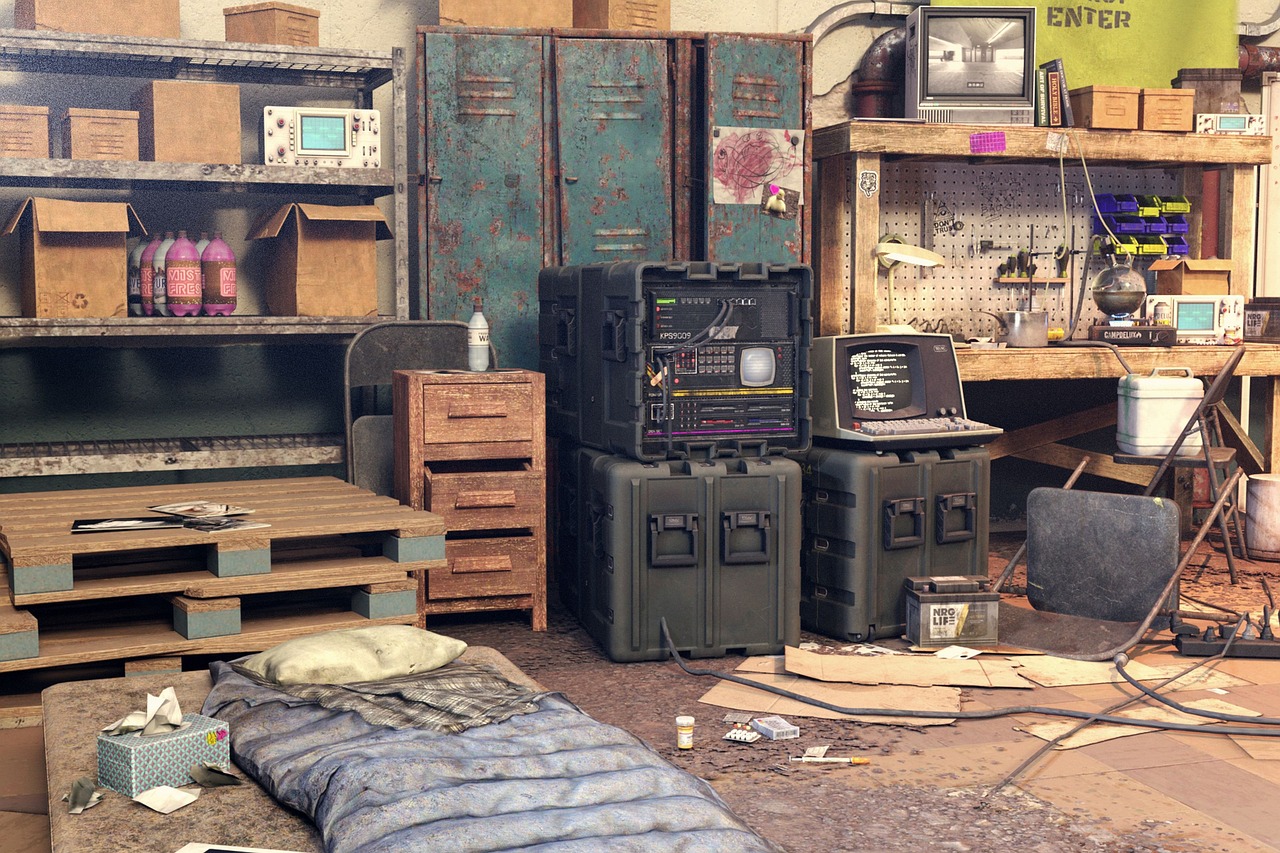
Incorporating Storage Solutions
When it comes to creating a pottery workbench that truly serves your needs, storage solutions are not just an afterthought—they're a crucial element of your design. Imagine working on a complex piece of pottery and having to stop every few minutes to search for tools or materials. Frustrating, right? By incorporating smart storage options into your workbench, you can keep everything you need within arm's reach, making your creative process smoother and more enjoyable.
One effective way to integrate storage is by adding open shelves above your work surface. These shelves can hold frequently used items like glazes, tools, and reference materials. Not only do they keep your essentials organized, but they also allow for quick access, reducing the time you spend searching for what you need. Consider using a combination of adjustable shelves and fixed ones to accommodate various sizes of items. For instance, you might want a higher shelf for larger containers and a lower one for smaller tools.
Additionally, drawers can be a game-changer for your workspace. They can hide away clutter and keep your work area looking neat. You could design your workbench with a few shallow drawers for smaller tools like carving implements and a deeper drawer for larger items such as rolling pins or clay storage. If you're feeling crafty, you can even repurpose old furniture drawers to save on costs.
Another clever storage solution is to incorporate a tool rack. This could be as simple as a pegboard mounted on the wall behind your workbench. By hanging your tools on a pegboard, not only do you keep them organized, but you also create a visual display that can inspire your creativity. You can customize the layout to fit your specific tools and even change it as your collection grows.
To further enhance your storage, consider using carts or rolling bins. These mobile storage solutions allow you to easily move materials around your workspace. You can keep your clay, glazes, and other supplies in a cart that can be rolled out when needed and tucked away when not in use. This flexibility can be especially beneficial if you have a smaller space where you need to maximize functionality.
Remember, the key to effective storage solutions is to ensure they align with your working style. Take the time to assess what tools and materials you use most frequently and design your workspace accordingly. By doing so, you'll create a pottery workbench that not only looks great but also enhances your productivity and creativity.
- What materials are best for building storage solutions? Plywood and hardwood are excellent choices for durability, while repurposed furniture can also add character and save costs.
- How can I maximize space in a small workshop? Consider vertical storage options like shelves and pegboards, and use mobile carts to keep your workspace flexible.
- Are there specific dimensions for a pottery workbench? The ideal height varies based on your personal comfort, but typically ranges from 30 to 36 inches. Ensure that your storage solutions are easily accessible within this height range.

Finishing Touches
After investing time and effort into building your pottery workbench, it’s the that can really make it shine and elevate your workspace to the next level. Just like the final brush strokes on a beautiful piece of pottery, these details can enhance both the aesthetic appeal and functionality of your bench. So, what should you consider as you wrap up your project? Let's dive in!
First off, think about the surface treatment. The surface of your workbench is where all the magic happens, so it’s essential to protect it from spills, scratches, and wear. You have a few options here:
- Wood Sealers: These provide a protective layer against moisture and stains, ensuring your bench lasts longer.
- Varnish: A clear coat of varnish can enhance the wood’s natural beauty while offering a durable finish.
- Paint: If you want to add a splash of color, consider using high-quality paint that can withstand the rigors of pottery work.
Next, let’s talk about protective coatings. Applying a protective coating not only enhances the durability of your workbench but also makes it easier to clean. You might want to consider epoxy resin, which provides a tough, waterproof surface. This is especially useful if you plan to work with clay and glazes that can be messy!
Another aspect to consider is organization. Finishing touches aren’t just about looks; they’re also about making your workspace more efficient. Adding storage solutions like shelves, pegboards, or drawers can keep your tools and materials within reach. Imagine effortlessly finding your favorite sculpting tool without having to dig through a cluttered pile! Here’s a simple table to help you visualize some storage ideas:
| Storage Solution | Description |
|---|---|
| Shelves | Great for storing materials and keeping your work area tidy. |
| Pegboards | Perfect for hanging tools and keeping everything visible and accessible. |
| Drawers | Ideal for keeping smaller items organized and out of sight. |
Finally, don’t forget about the visual appeal. Adding personal touches like a splash of color, decorative elements, or even a small plant can make your workspace feel more inviting. After all, a creative environment can inspire creativity! You might even consider hanging artwork or pottery that you admire, which can serve as motivation during those long creative sessions.
In conclusion, the finishing touches you choose for your pottery workbench can significantly impact your overall experience. From protective coatings to organizational solutions, every detail counts. So, take a moment to reflect on what will make your workspace not just functional, but also a place where you feel inspired to create!
Q1: What type of wood is best for a pottery workbench?
A1: Plywood is often the best choice due to its strength and affordability, but hardwood offers durability if you're willing to invest more.
Q2: How can I ensure my workbench is the right height?
A2: A good rule of thumb is to have the workbench height at about waist level, allowing for comfortable posture while working.
Q3: What protective coating should I use?
A3: Epoxy resin is highly recommended for its durability and waterproof properties, making it ideal for pottery work.
Q4: How can I keep my workbench organized?
A4: Utilize shelves, pegboards, and drawers to create a clutter-free workspace where everything is easily accessible.
Frequently Asked Questions
- What materials do I need to build a pottery workbench?
To build a sturdy pottery workbench, you'll need materials like plywood or hardwood for the surface, 2x4 lumber for the frame, screws or nails for assembly, and possibly some brackets for added support. Don't forget to consider your personal preferences for aesthetics and durability!
- How do I choose the right height for my workbench?
The ideal height for your workbench depends on your body type and working style. A good rule of thumb is to have the surface at about waist height when standing. If you plan to work seated, consider a height that allows for comfortable arm positioning. It's all about finding what feels good for you!
- Can I use softwood for my pottery workbench?
Yes, you can use softwood, but keep in mind that it may not be as durable as hardwood. Softwoods like pine are lighter and easier to work with, making them a good choice for beginners. However, if you want a workbench that lasts, consider investing in hardwood for better longevity.
- What tools do I need to build my workbench?
Essential tools for building your pottery workbench include a circular saw or hand saw for cutting wood, a drill for making holes and driving screws, a measuring tape for accuracy, and a level to ensure everything is even. Having the right tools will make your project smoother and more enjoyable!
- How can I incorporate storage into my workbench design?
Incorporating storage solutions can greatly enhance your workspace. Consider adding shelves above the bench for easy access to tools, drawers for storing smaller items, and pegboards for hanging tools. This way, everything you need is right at your fingertips, keeping your workspace organized and efficient!
- What finishing touches should I consider for my workbench?
Finishing touches like sanding the surface smooth, applying a protective coating, or painting can enhance both the look and durability of your workbench. A good finish not only protects the wood from moisture and wear but also gives your workspace a personal touch that reflects your style!



















